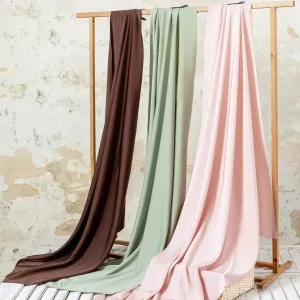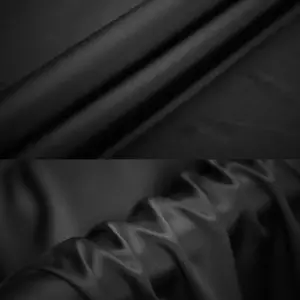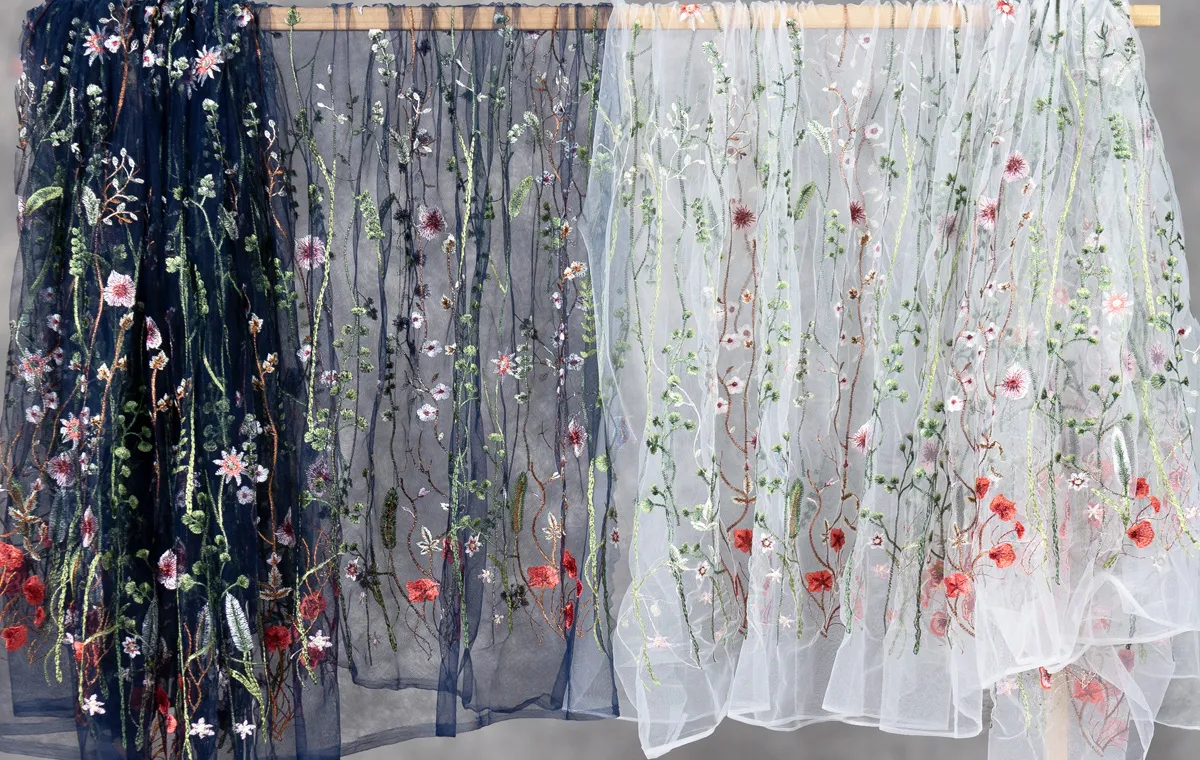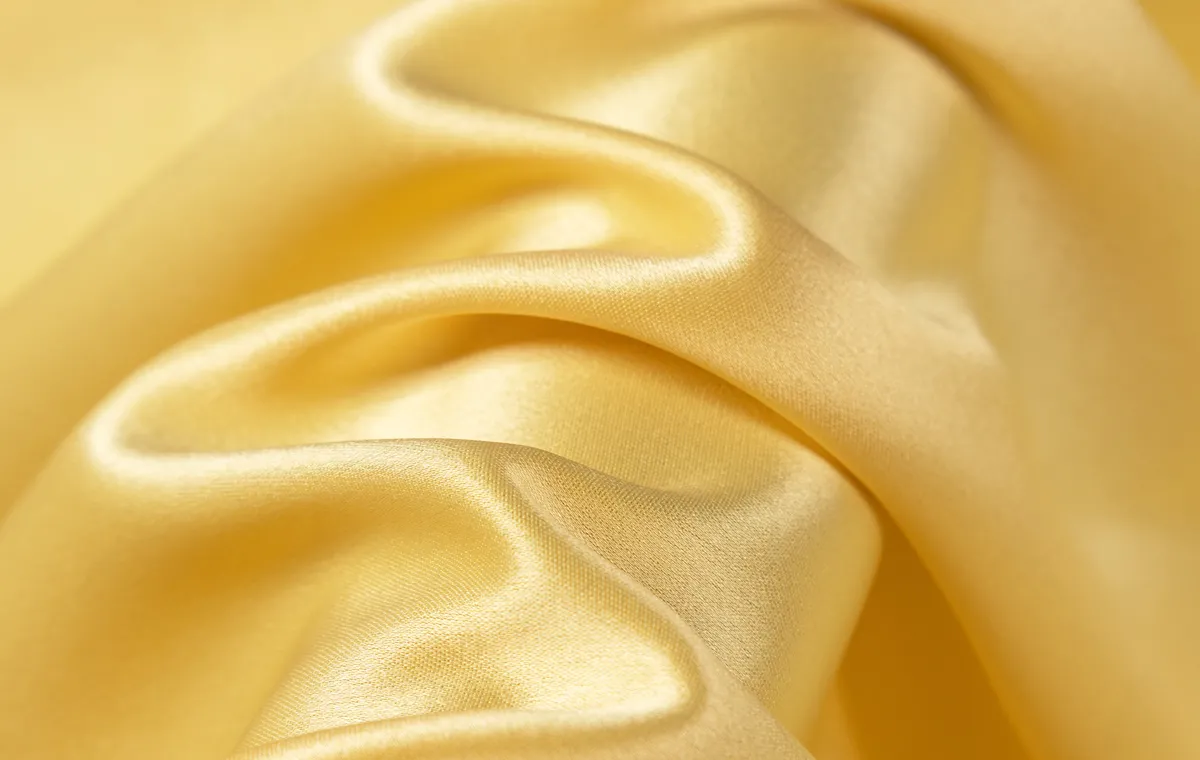What Is Satin?
Satin fabric is a magical, luxurious and elegant type of fabric that is soft, shiny, and smooth. Satin fabric can also feature a shiny face side, with a dull and textured back side. Satin is not only a type of fabric, but it's also a weave pattern. Satin fabric is created by weaving one thread over four or more threads in the warp direction and one thread under four or more threads in the weft direction. Woven in a satin-style weave, the satin fabric can be manufactured from any fiber, including silk, cotton, and polyester. The unique weaving structure of the satin fabric allows for increased durability and wrinkle resistance. Satin fabric can also have intricate printed designs and styles. Not all satin fabric is created equal, the fabric can range in weight, stretch, and even luster.
What Can Satin Be Used For?
Satin is a glossy, smooth fabric with a luxurious sheen that is used for a variety of items ranging from clothing to bedding. It is a popular choice for special occasions and formal wear due to its shine and texture. Satin is a versatile material that can be used in many ways, from garments to decorative pieces and more.
- Clothing: Satin is a popular choice for formal wear and special occasions. It is often used for dresses, blouses, and skirts, as well as jackets and coats. Satin is also often used for lingerie and corsets. It is popular for its smooth, luxurious feel and sheen.
- Decorative Pieces: Satin is a great choice for decorative pieces, such as curtains, tablecloths, and seat covers. Satin is a great way to add a luxurious touch to any room.
- Bedding: Satin is a popular choice for bedding due to its soft, smooth feel. It is often used for sheets, pillowcases, and duvet covers. Satin is also often used for comforters and quilts.
- Accessories: Satin can also be used for a variety of accessories, such as scarves, ties, and hats. It is often used for evening bags, headbands, and other fashion accessories.
What Is the Difference Between Satin And Sateen?
When it comes to textiles, the terms satin and sateen are often used interchangeably. However, there are a few key differences that set these two fabrics apart. Satin is a type of weave that produces a glossy, smooth, and slightly stiff fabric. It is made by weaving threads together in a unique way that creates a lustrous surface. Sateen is a type of weave similar to satin, but it produces a softer, more supple fabric. It is also made by weaving threads together, but in a slightly different manner that creates a matte and softer surface.
They are both lovely and magical fabrics but the main difference between satin and sateen is the feel and texture of the fabric. Satin is typically stiffer and has a glossy sheen to it, while sateen is softer and has a matte finish. Satin fabrics are usually lightweight, while sateen fabrics are heavier and more durable. In terms of color, satin can come in a variety of colors and patterns, while sateen is usually made in more muted tones. In conclusion, satin and sateen are two fabrics that are often used interchangeably, but there are a few key differences between them. Satin is stiffer and has a glossy sheen to it, while sateen is softer and has a matte finish. In terms of care, both fabrics require light and gentle washing.
What Is the Difference Between Silk and Satin?
Silk and satin–often get confused with each other, they look similar but what are the differences between the two? Despite their similar appearance, the biggest difference is that satin is a weave and not a natural fiber, whereas silk is a natural fiber fabric. Silk is more luxurious and as expected more expensive. This is because of the quality of fibers used to make the fabric, and it’s a more time-consuming fiber to manage. Silk is a versatile fabric, delicate yet durable. Strong but breathable and insulating, it’s also great for those who have sensitive skin because of its organic non-irritating natural state.
Types of Satin
We offer a diverse range of silk satin fabrics silk satin fabrics are renowned for their lustrous appearance and fluid drape. But not all satins are created equal; there are several different types, each with its own unique characteristics. At OneYard, you can choose from our wide range of satin fabric by the yard, such as charmeuse, polyester satin, cotton satin, stretch satin, rayon satin, silk satin, and more. The most magical quality of the satin fabric is its ability to absorb dyes, meaning it can be dyed to create stunning and vibrant colors. They feel beautifully smooth on the skin and have long been regarded as a queen amongst dress fabrics.
1, Polyester Satin

Polyester satin is one of the most common and is made of 100% polyester. It is lightweight, durable, and wrinkle-resistant, making it ideal for items like bed sheets and pillowcases. It is also easy to clean and maintain, making it a popular choice for clothing.



2, Cotton Satin
Cotton satin is a slightly heavier fabric than polyester satin, but it’s still relatively lightweight. It is soft and breathable, making it suitable for items like sleepwear and lingerie. It is also wrinkle-resistant, making it a great choice for formal attire
3, Silk Satin
Silk satin is the most luxurious type of satin fabric. It is lightweight but has a heavier drape than cotton or polyester satin. It is also more delicate and requires more care when cleaning, making it best for evening wear and special occasion clothing.
4, Rayon Satin
Rayon satin has a similar drape and feel to silk satin, but is much less expensive. It is slightly heavier than polyester and cotton satin and is not as wrinkle-resistant. It is often used for more casual items, such as tops and dresses.
5, Charmeuse Satin
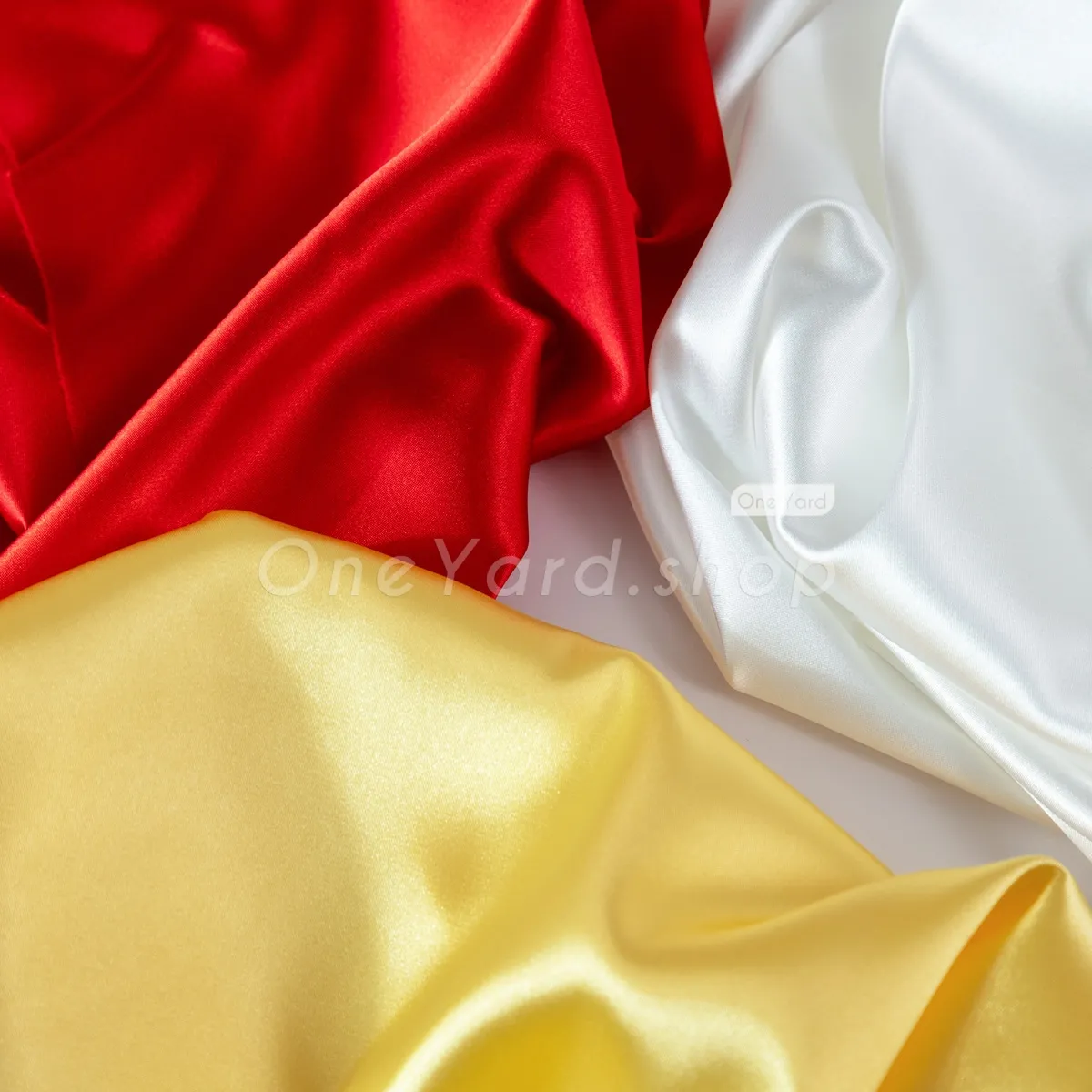
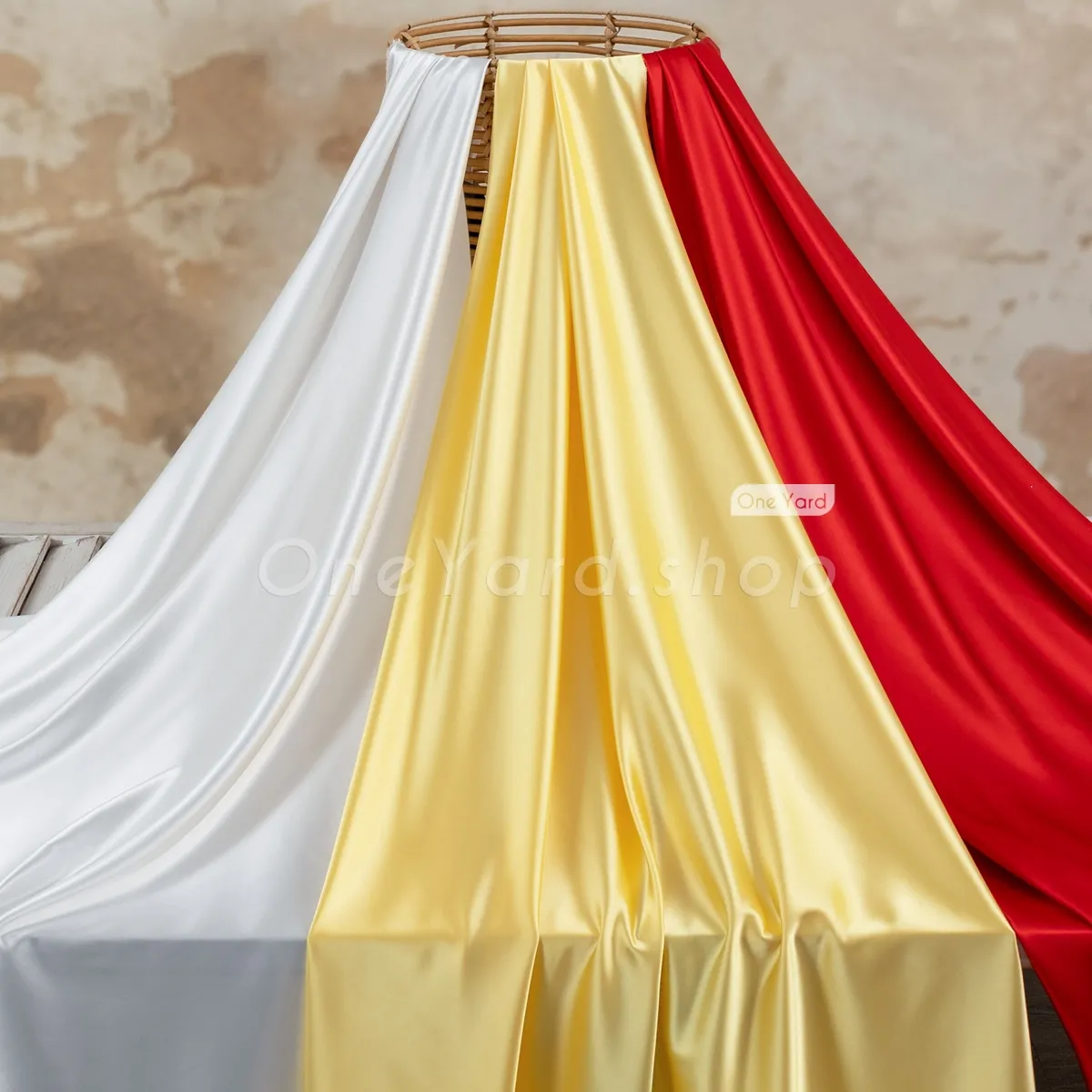

Charmeuse satin cloth has a lustrous sheen. The name of the fabric comes from the French word, ‘charmer’. This beautiful fabric stands true to its name and can be used to make dresses. The characteristic of the best Charmeuse satin fabric is that it is lightweight, body fitting, and has a shiny front. You can also choose this material to make bridesmaid dresses.


6, Stretch Satin


Stretch satin is quite popular in the clothing industry. It’s satin with a little bit of elasticity, which comes from adding elastane, spandex, or Lycra. Opt for stretch silk satin if you are making lingerie, bridal wear, or body-fitting dresses.


7, Double-Faced Satin


Double-faced satin, as the name suggests, has the shine of satin cloth on both sides. It is reversible and mid-weight fabric. The extra silky texture does not make it ideal for clothing. You can use the double-faced satin cloth to make ribbons and decorations. It is also perfect for making wedding favor decorations and gift-wrapping material.


The choice of Satin cloth depends on the end-use. It is essential to choose the right kind of fabric for your project to avoid any disappointment.
Advantages & Disadvantages of Satin Fabric
The advantages of satin fabric include its luxurious look, its lightweight feel and its ability to be dyed easily. Satin fabric is also smooth and durable and can be used for a variety of different clothing items. It is also very comfortable and can be worn for both casual and formal events.
The disadvantages of satin fabric include its tendency to wrinkle easily and its inability to hold its shape. It is also prone to static cling and can become easily damaged if not properly cared for. In addition, the satin fabric can be quite expensive and can be difficult to find in certain colors and styles.
Overall, satin fabric is a beautiful choice for clothing and fashion accessories. It is luxurious and comfortable, but it is important to consider the advantages and disadvantages before making a purchase. With proper care, the satin fabric can last for many years and can look stunning when worn.
How Should I Care for Satin Fabrics?
Because satin can be made from different types of fibers, care instructions will vary. Here are some common tips:
- Attend to stains immediately so they do not become permanent. Treat spots with a stain remover before washing. If it is a blood stain, soak the stain in cold water before you use the stain remover. Avoid stain removers that contain bleach.
- Dry clean satin garments made of silk and acetate. Satin clothing made from these fibers is delicate. You can wash satin dresses made from other fibers. Turn the garment inside out and hand wash it in cool or warm water with a detergent made for delicate clothing. If you want to use a washing machine, choose the delicate cycle.
- Let the garment air-dry. Lay it on a thick towel and roll the towel up to squeeze out some of the water. You can dry it outside but keep it out of direct sunlight, which may cause fading.
- Iron the satin garment if necessary, but keep a cotton cloth or lightweight towel between the satin and the direct heat of the iron, and use the lowest setting.

 Best
Best  New
New  Featured
Featured  Featured
Featured 
